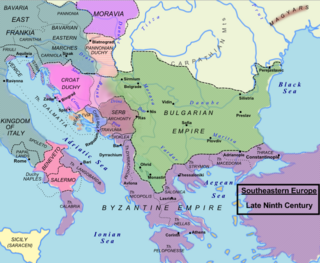The 810s decade ran from January 1, 810, to December 31, 819.
The 830s decade ran from January 1, 830, to December 31, 839.
The 840s decade ran from January 1, 840, to December 31, 849.
The 860s decade ran from January 1, 860, to December 31, 869.
The 780s decade ran from January 1, 780, to December 31, 789.
The 710s decade ran from January 1, 710, to December 31, 719.
The 920s decade ran from January 1, 920, to December 31, 929.

Year 786 (DCCLXXXVI) was a common year starting on Sunday of the Julian calendar, the 786th year of the Common Era (CE) and Anno Domini (AD) designations, the 786th year of the 1st millennium, the 86th year of the 8th century, and the 7th year of the 780s decade. The denomination 786 for this year has been used since the early medieval period, when the Anno Domini calendar era became the prevalent method in Europe for naming years.

Year 845 (DCCCXLV) was a common year starting on Thursday of the Julian calendar.

Year 849 (DCCCXLIX) was a common year starting on Tuesday of the Julian calendar.

Year 836 (DCCCXXXVI) was a leap year starting on Saturday of the Julian calendar, the 836th year of the Common Era (CE) and Anno Domini (AD) designations, the 836th year of the 1st millennium, the 36th year of the 9th century, and the 7th year of the 830s decade.
Year 863 (DCCCLXIII) was a common year starting on Friday of the Julian calendar.

Year 716 (DCCXVI) was a leap year starting on Wednesday of the Julian calendar, the 716th year of the Common Era (CE) and Anno Domini (AD) designations, the 716th year of the 1st millennium, the 16th year of the 8th century, and the 7th year of the 710s decade. The denomination 716 for this year has been used since the early medieval period, when the Anno Domini calendar era became the prevalent method in Europe for naming years.

Year 913 (CMXIII) was a common year starting on Friday of the Julian calendar.
Abd al-Rahman ibn Khalid ibn al-Walid was the governor of Homs under caliphs Uthman and Mu'awiya I. During Mu'awiya's governorship of Syria (639–661), Abd al-Rahman commanded a number of campaigns against the Byzantine Empire and defended the Upper Mesopotamian frontier from the Iraq-based forces of Caliph Ali. He fought reputably against the latter at the Battle of Siffin in 657 and continued his governorship of Homs and campaigns against the Byzantines after Mu'awiya became caliph in 661. His battlefield reputation and descent from his father, the prominent general Khalid ibn al-Walid, made him particularly popular among the Arabs of Syria. Mu'awiya ultimately perceived him as a potential rival of his own son Yazid, who he was grooming as his successor, which led the caliph to allegedly order Abd al-Rahman's poisoning in 666.

The Battle of Ajnadayn was fought in July or August 634, in a location close to Beit Guvrin in the Roman-era Palestine region; it was the first major pitched battle between the Byzantine (Roman) Empire and the army of the Arab Rashidun Caliphate. The result of the battle was a decisive Muslim victory. The details of this battle are mostly known through Muslim sources, such as the ninth-century historian al-Waqidi.
Abdallah al-Battal was a Muslim Arab commander in the Arab–Byzantine Wars of the early 8th century, participating in several of the campaigns launched by the Umayyad Caliphate against the Byzantine Empire. Historical facts about his life are sparse, but in Anatolia, a legendary tradition grew around him after his death, and he became a famous figure in Turkish epic literature as Battal Gazi.
Al-Hasan ibn Sahl was an Abbasid official and governor of Iraq for Caliph al-Ma'mun during the Fourth Fitna.
Abū ʿAbdallāh Muḥammad ibn Ibrāhīm Ṭabāṭabā ibn Ismāʿīl al-Dībādj ibn Ibrāhīm al-Ghamr ibn al-Ḥasan al-Muthannā, better known as Ibn Ṭabāṭabā, was a Hasanid who was the figurehead of an unsuccessful Zaydi uprising against the Abbasid Caliphate in 814–815, during the Fourth Fitna. His grandfather Ismāʿīl al-Dībāj is the grandson of Hasan al-Mu'thannā.
Abu'l-Sarāyā al-Sarī ibn Manṣūr al-Shaybānī was leader of a Zaydi revolt against the Abbasid Caliphate in Kufa and Iraq in 815. The revolt spread quickly across southern Iraq, and his agents even took over Mecca and Medina. At one point, the rebels threatened even Baghdad, but the Abbasid general Harthama ibn A'yan drove them back to Kufa in a series of victories. Forced to abandon Kufa in late August, Abu'l-Saraya and his followers tried to flee, but were pursued, defeated, and captured. Abu'l-Saraya himself was executed at Baghdad on 18 October. The uprising continued in the Hejaz for a few months under Muhammad ibn Ja'far al-Sadiq as anti-caliph at Mecca, until this too was suppressed by the Abbasid troops.








